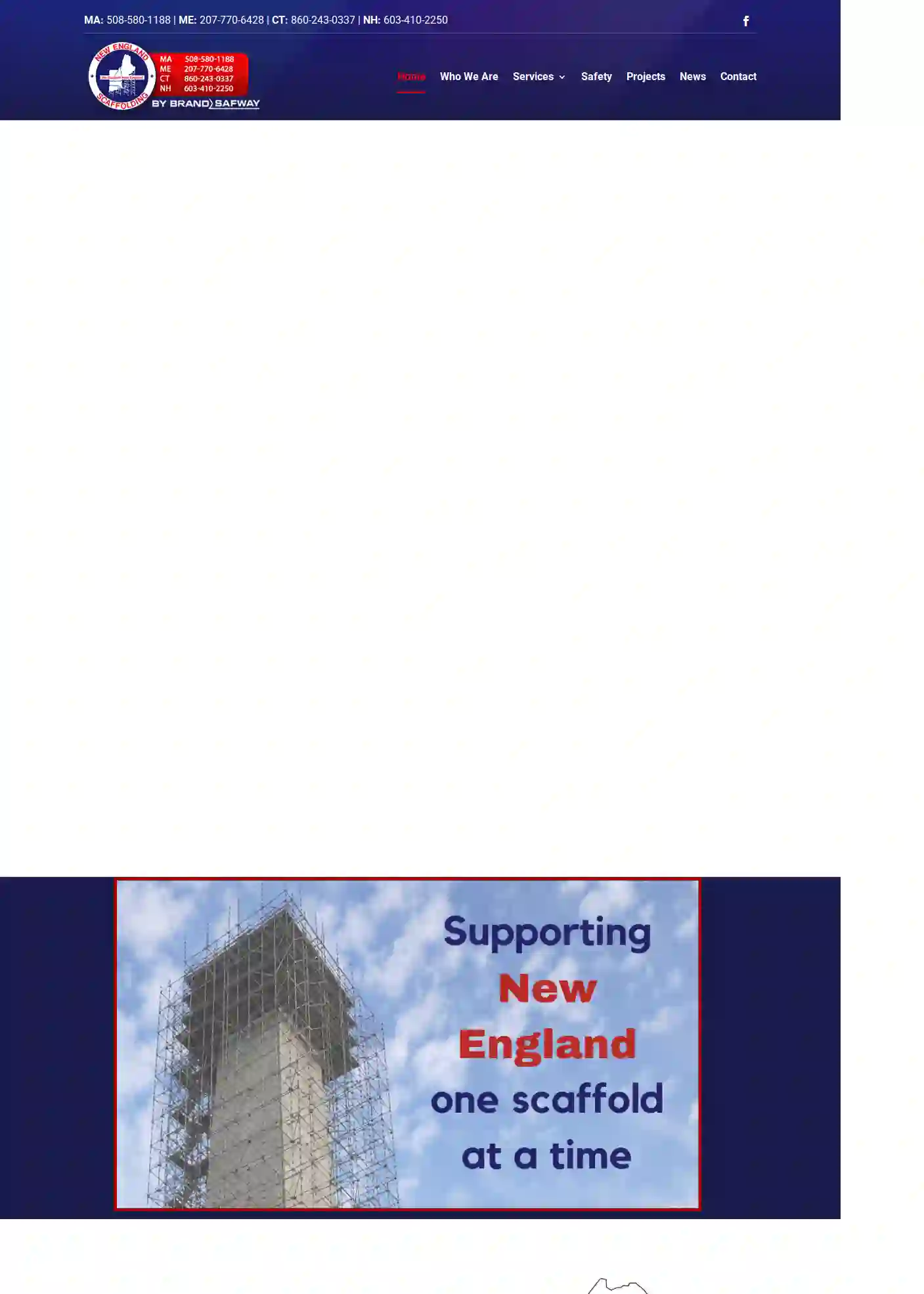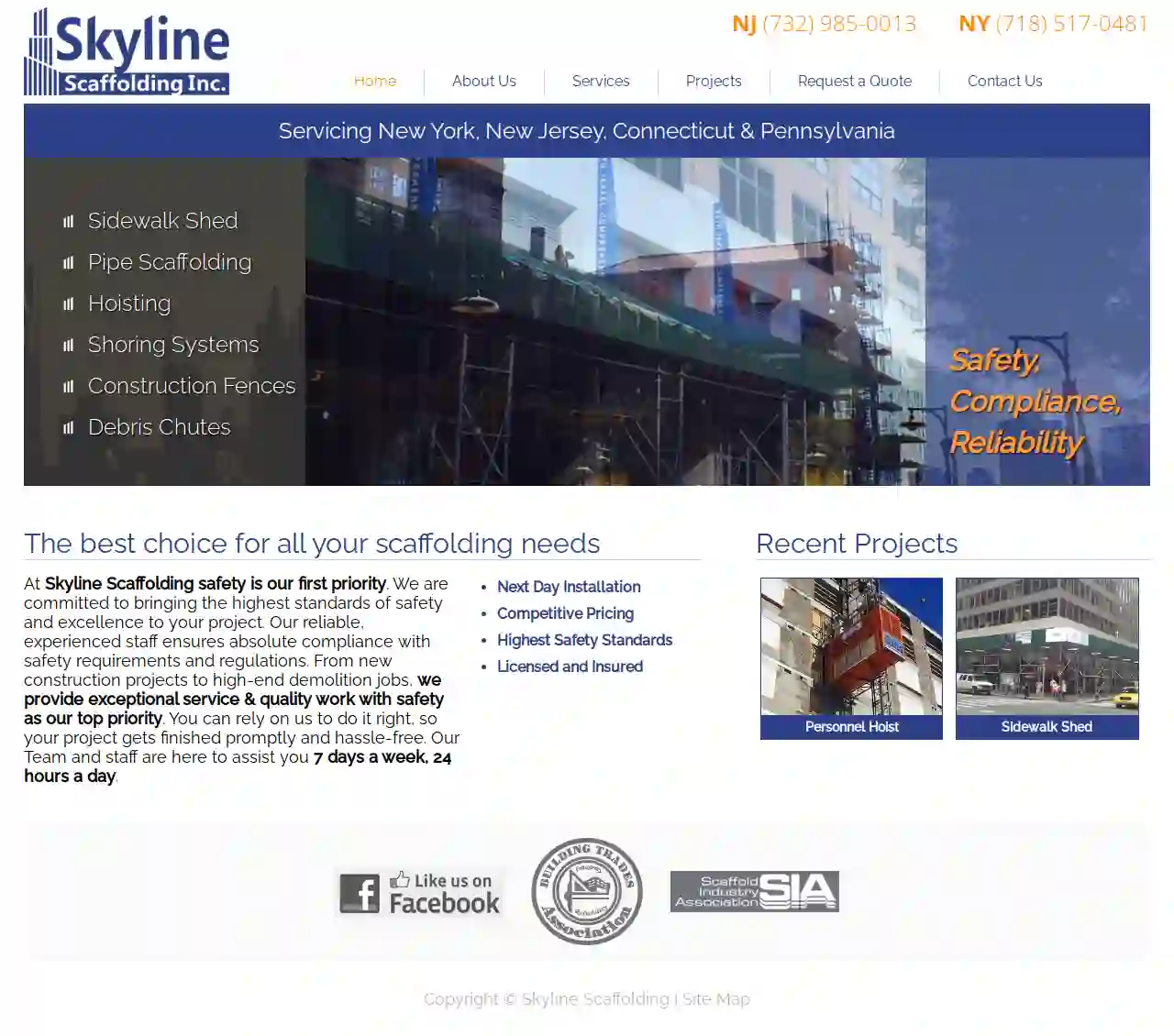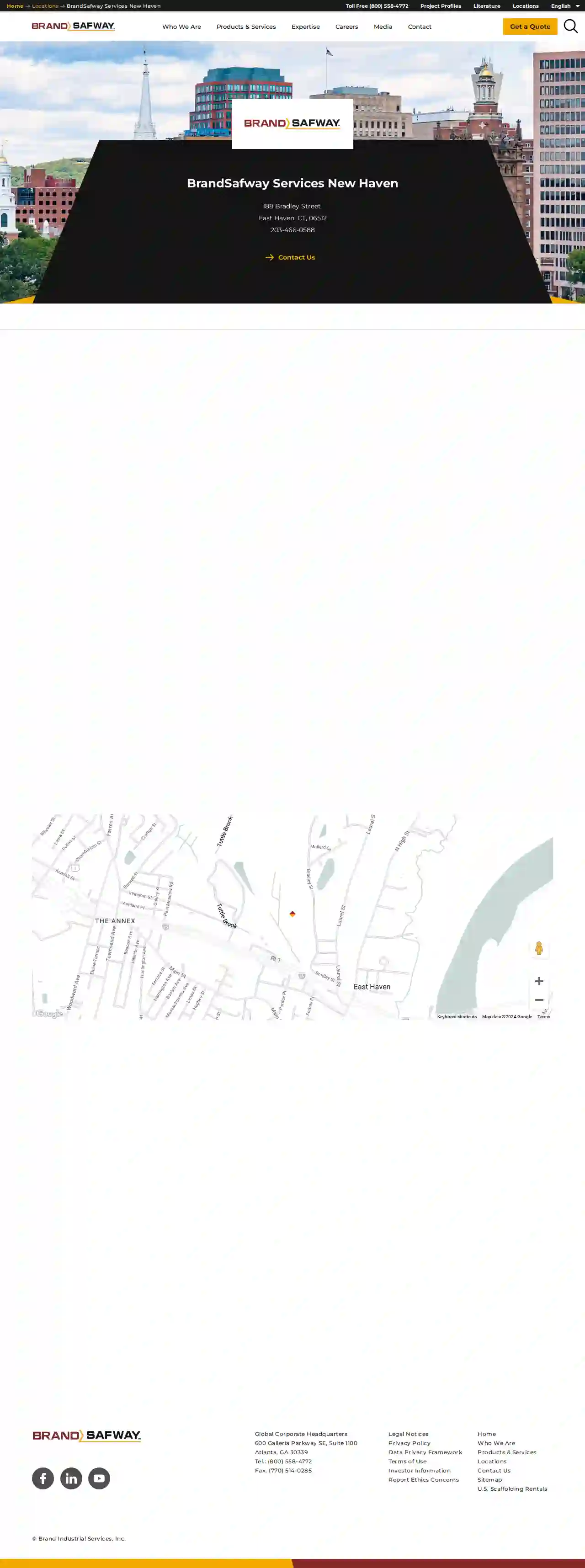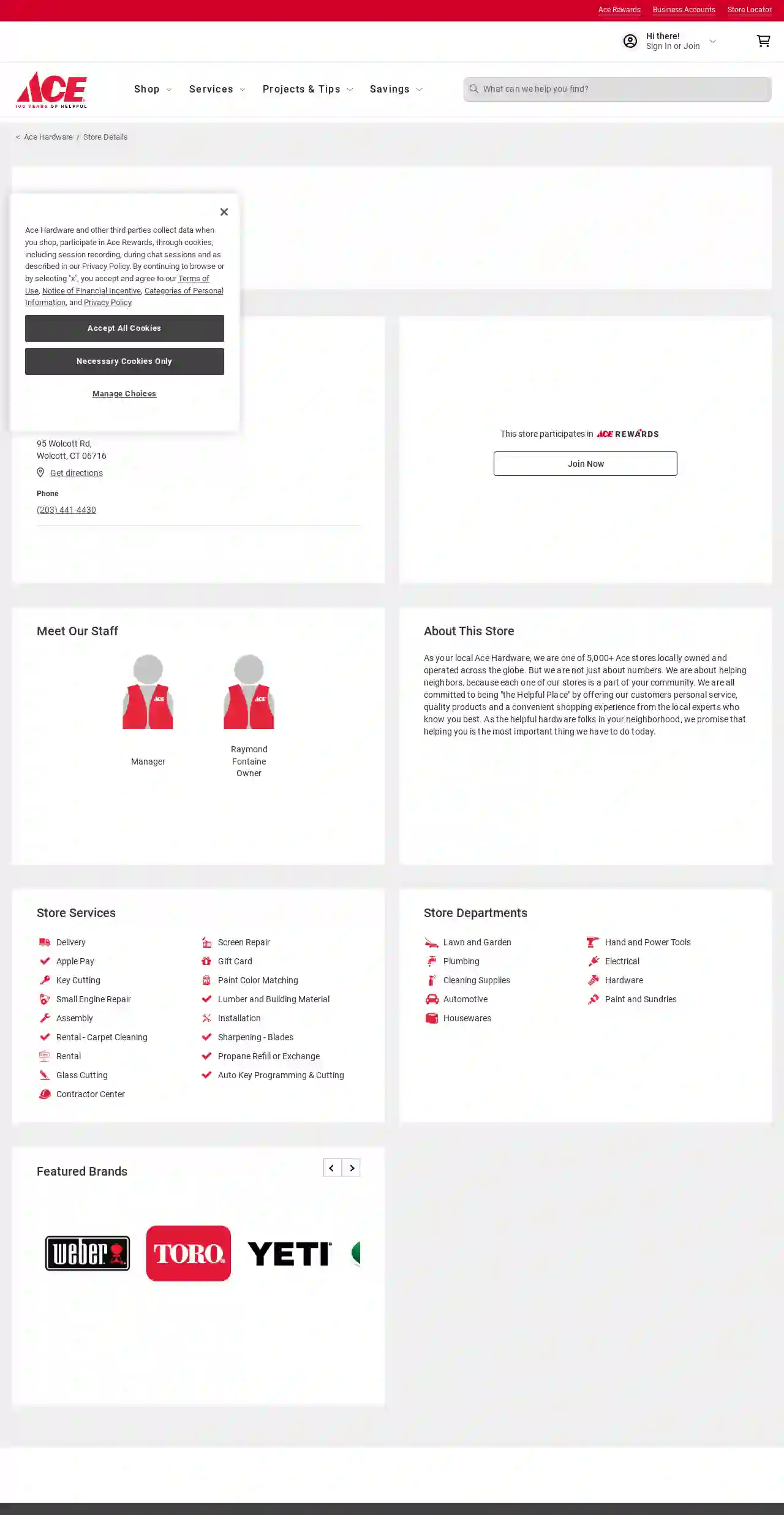Scaffolding Companies Broad Brook
Find Scaffolding Experts in Broad Brook
Receive up to 3 Scaffolding Companies quotes for your project today! Compare profiles, reviews, accreditations, portfolio, etc... and choose the best service.

New England Scaffolding
2.54 reviewsNorwell, MA, 412 R Washington St, 02061, USNew England Scaffolding is a leading provider of scaffolding solutions, offering a range of services including scaffolding, shoring, suspended scaffolding, containment, temporary fencing, and debris chutes. With offices in Massachusetts, Maine, Connecticut, and New Hampshire, they prioritize safety and customer satisfaction. Their team of experienced professionals ensures that projects are completed efficiently and effectively, adhering to the highest safety standards. New England Scaffolding is dedicated to delivering top-quality services and building long-lasting relationships with clients.
- Services
- Why Us?
- Accreditations
- Our Team
- Testimonials
- Gallery
Get Quote
SafwayAtlantic by BrandSafway – New Jersey
4.423 reviews123 Main St, Newark, 07001, USSafway Atlantic by BrandSafway New Jersey is a leading provider of scaffolding solutions, offering a wide range of services including scaffolding rental, scaffolding installation, and scaffolding safety training. With a strong commitment to safety and customer satisfaction, the team at Safway Atlantic by BrandSafway New Jersey strives to provide top-notch service and support to clients across various industries.
- Services
- Why Us?
- Accreditations
- Our Team
- Testimonials
Get Quote
Skyline Scaffolding Group, Inc.
4.49 reviews740 Ramsey Avenue, Hillside, 07205, USAt Skyline Scaffolding, safety is our top priority. We are committed to bringing the highest standards of safety and excellence to your project. Our reliable, experienced staff ensures absolute compliance with safety requirements and regulations. From new construction projects to high-end demolition jobs, we provide exceptional service & quality work with safety as our top priority. We have over 25 years of experience in the field of scaffolding and bring that experience to your project. We are passionate about what we do and look for ways to provide the best possible service to our clients. For our customer’s convenience, we provide all of our services to New York, New Jersey, Pennsylvania, and Connecticut.
- Services
- Why Us?
- Accreditations
- Our Team
- Gallery
Get Quote
Nutmeg Scaffold & Ladder Co
4.97 reviewsWilton, CT, 743 Danbury Road, 06897, USNutmeg Scaffold is a leading provider of scaffolding rental and sales services in Connecticut, serving Fairfield County for over 50 years. With a wide range of commercial-quality products, they aim to provide the contractor community with top-of-the-line scaffolding solutions. Their staff can help calculate the required scaffolding for any project and deliver it to the job site, ensuring maximum efficiency and safety. Nutmeg Scaffold offers various services including scaffolding rental, pump jack sales and rental, and scaffolding in use. They prioritize safety and environmental consciousness, recommending the use of scaffolding stair towers for upper-level entry and promoting eco-friendly practices.
- Services
- Why Us?
- Accreditations
- Our Team
- Testimonials
- Gallery
Get Quote
Scaffolding Towers of America
414 reviews330 Roycefield Rd., Building J, Hillsborough, 08844, USScaffolding Towers of America, Inc. is New Jersey's leading provider of scaffolding and access equipment. With over 50 years of experience, we offer a wide range of products and services to meet the needs of our clients, from small contractors to large corporations. Our commitment to quality, safety, and customer service has made us the trusted partner for scaffolding solutions throughout the Tri-State area. We carry a comprehensive inventory of Bil-Jax frame scaffolding and components, as well as system scaffolding from Layher and A-1 Scaffolding. Our IN-STOCK selection of scaffolding equipment is the largest in New Jersey, and our range of OSHA compliant products includes scaffold frames, rolling towers, stair towers, plank, aluminum platforms, baker scaffolding, leveling jacks, casters, braces, climbing ladders, hoist arms, guard rails, swivel clamps, straight clamps, and well wheels. We offer both new and used scaffold for sale. If you know your piece count, we can quickly provide a quote for you. If you aren't sure, simply call us with the required dimensions and we can get you an estimate. Most scaffold orders are available for pick up the same day. We can also deliver your scaffold order for an additional charge. Advance notice is required for scaffold delivery. Scaffold installation is also available. In addition to our scaffolding products, we also carry a variety of Werner products designed to provide access. These include various heights of stepladders, extension ladders, platform ladders, podium ladders, aluminum and steel pump jacks, and 20" wide 2-man stages (picks). All products are IN STOCK and available for pick up today. Delivery is also available. Our team of experienced professionals is dedicated to providing our clients with the highest quality scaffolding solutions. We are committed to safety, reliability, and customer satisfaction. Contact us today to learn more about our products and services.
- Services
- Why Us?
- Gallery
Get Quote
BrandSafway Services New Haven
4.73 reviews123 BrandSafway Blvd, New Haven, 12345, USBrandSafway is a leading provider of access solutions, including scaffolding, aerial work platforms, and forming and shoring. With a strong commitment to safety, quality, and customer satisfaction, BrandSafway offers a wide range of services tailored to meet the unique needs of clients across various industries. Their team of experienced professionals works closely with clients to understand their requirements and deliver customized solutions that enhance efficiency and productivity. BrandSafway is dedicated to providing innovative solutions that meet the highest standards of safety and quality, ensuring successful project outcomes and long-term partnerships.
- Services
- Why Us?
- Accreditations
- Our Team
- Testimonials
Get Quote
Scaffold Partners
Waterbury, USScaffold Partners specializes in connecting investors to well-vetted self-storage investment opportunities that deliver consistent financial returns. The self-storage industry is a $44 billion industry that has experienced exponential growth in recent years, averaging annual returns of 17.26%. Unlike other asset classes, the self-storage industry is highly fragmented, with the public REITs owning less than 40% of the market. This leaves the majority of properties in the hands of smaller operators, creating tremendous acquisition potential when compared to other real estate asset classes. Fundamentals in this sector are strong, and the self-storage market promises long term expansion and success. New opportunities – for example storing large recreational items and technology – are forecast to carry forward consumer demand and bring in new demographics in coming years.
- Services
- Why Us?
- Accreditations
- Gallery
Get Quote
R&R Scaffolding, Ltd.
4.69 reviews333 SE 2nd Ave, Miami, 33131, USR&R Companies have been pioneers and innovators in the suspended scaffold industry for nearly four decades. We deliver services and products ranging from the simplest solutions to the most complex systems. Our primary markets include commercial, industrial, institutional, and residential sectors. Our diverse portfolio of brands and extensive capabilities have transformed us into the multifaceted company we are today.
- Services
- Why Us?
- Accreditations
- Gallery
Get Quote
Ace Hardware of Wolcott
4.567 reviews95 Wolcott Rd, Wolcott, 06716, USAs your local Ace Hardware, we are one of 5,000+ Ace stores locally owned and operated across the globe. But we are not just about numbers. We are about helping neighbors, because each one of our stores is a part of your community. We are all committed to being "the Helpful Place" by offering our customers personal service, quality products and a convenient shopping experience from the local experts who know you best. As the helpful hardware folks in your neighborhood, we promise that helping you is the most important thing we have to do today.
- Services
- Why Us?
- Accreditations
- Our Team
- Gallery
Get Quote
Unique Scaffolding Systems, LLC
4.37 reviews808 Fairfield Avenue, Kenilworth, 07033, USAt Unique Scaffolding Systems, we have the highest standards in the industry with reliability, consistent high quality workmanship, competitive prices, and high regard for safety. We are fully insured, fully trained and OSHA compliant. We consistently exceed customer expectations. We specialize in all aspects of scaffolding including systems scaffold, heavy duty side walk bridges, stair towers and shoring. We also offer hoists, netting, enclosures, and more. We are a NJ-based, owner-operated, scaffold erecting and dismantling contractor doing business in the tri-state area since 2008. We will provide an access solution to any project, including commercial buildings, schools, churches, municipal projects, water tank towers and refineries. We also specialize in scaffolding for the restoration of landmark-designated historic buildings and structures. We are available 24 hours a day, 7 days a week. Engineered drawings are available for any project, no matter how simple or complex.
- Services
- Why Us?
- Gallery
Get Quote
Over 2,353+ Scaffolding Businesses registered
Our scaffolding companies operate in Broad Brook & beyond!
ScaffoldingHQ has curated and vetted Top Scaffolding Businesses in Broad Brook. Find a top & trustworthy business today.
Frequently Asked Questions About Scaffolding Companies
- Workers: Consider the number of workers on the scaffolding at any given time.
- Materials: Include the weight of building materials, tools, and equipment being used on the platform.
- Environmental Factors: Factor in potential loads from wind or snow, especially for taller scaffolding structures.
- Project Height and Access: The height of the structure and the accessibility of the working area are primary considerations.
- Load Capacity: The weight of workers, materials, and equipment that the scaffolding needs to support.
- Project Complexity and Shape: The shape and complexity of the structure may necessitate specialized scaffolding configurations.
- Ground Conditions: The type of ground (soft, uneven, sloping) will influence the scaffolding foundation and support requirements.
- Duration of Use: The length of time the scaffolding will be needed can impact the choice of system.
- Budget: Different scaffolding types have varying costs.
- Online Directories: Use specialized directories like ScaffoldingHQ to search for scaffolding companies in your area.
- Search Engines: Use Google or other search engines to search for 'scaffolding companies near me' or 'scaffolding rental [your location]'.
- Local Construction Associations: Contact local construction associations for recommendations.
- Word-of-Mouth Referrals: Ask friends, family, or colleagues for recommendations based on their past experiences.
What is the weight limit for scaffolding?
Can I erect scaffolding myself?
How do I choose the right type of scaffolding for my project?
How can I find scaffolding companies near me?
What is the weight limit for scaffolding?
- Workers: Consider the number of workers on the scaffolding at any given time.
- Materials: Include the weight of building materials, tools, and equipment being used on the platform.
- Environmental Factors: Factor in potential loads from wind or snow, especially for taller scaffolding structures.
Can I erect scaffolding myself?
How do I choose the right type of scaffolding for my project?
- Project Height and Access: The height of the structure and the accessibility of the working area are primary considerations.
- Load Capacity: The weight of workers, materials, and equipment that the scaffolding needs to support.
- Project Complexity and Shape: The shape and complexity of the structure may necessitate specialized scaffolding configurations.
- Ground Conditions: The type of ground (soft, uneven, sloping) will influence the scaffolding foundation and support requirements.
- Duration of Use: The length of time the scaffolding will be needed can impact the choice of system.
- Budget: Different scaffolding types have varying costs.
How can I find scaffolding companies near me?
- Online Directories: Use specialized directories like ScaffoldingHQ to search for scaffolding companies in your area.
- Search Engines: Use Google or other search engines to search for 'scaffolding companies near me' or 'scaffolding rental [your location]'.
- Local Construction Associations: Contact local construction associations for recommendations.
- Word-of-Mouth Referrals: Ask friends, family, or colleagues for recommendations based on their past experiences.